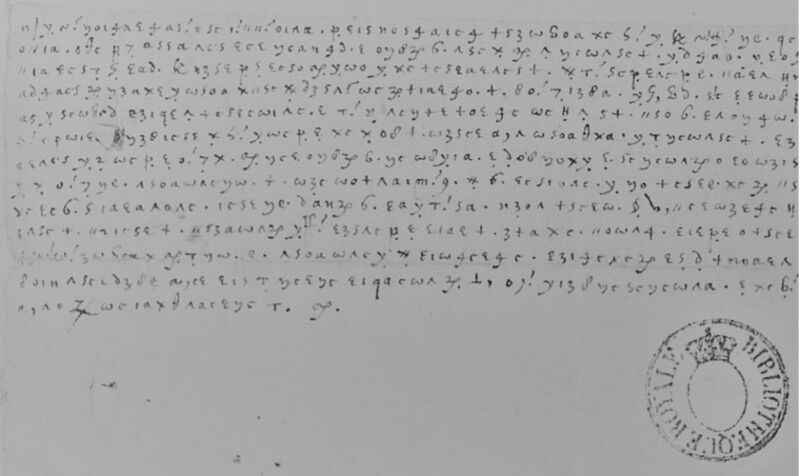Lost and found: Codebreakers decipher 50+ letters of Mary, Queen of Scots

Enlarge / Sample ciphertext (F38) found in the archives of the Bibliotheque Nationale de France, now attributed to Mary, Queen of Scots. (credit: Bibliotheque nationale de France)
An international team of code-breakers has successfully cracked the cipher of over 50 mysterious letters unearthed in French archives. The team discovered that the letters had been written by Mary, Queen of Scots, to trusted allies during her imprisonment in England by Queen Elizabeth I (her cousin)-and most were previously unknown to historians. The team described in a new paper published in the journal Cryptologia how they broke Mary's cipher, then decoded and translated several of the letters. The publication coincides with the anniversary of Mary's execution on February 8, 1587.
"This is a truly exciting discovery," said co-author George Lasry, a computer scientist and cryptographer in Israel. "Mary, Queen of Scots, has left an extensive corpus of letters held in various archives. There was prior evidence, however, that other letters from Mary Stuart were missing from those collections, such as those referenced in other sources but not found elsewhere. The letters we have deciphered are most likely part of this lost secret correspondence." Lasry is part of the multi-disciplinary DECRYPT Project devoted to mapping, digitizing, transcribing, and deciphering historical ciphers.
Mary sought to protect her most private letters from being intercepted and read by hostile parties. For instance, she engaged in what's known as "letter-locking," a common practice at the time to protect private letters from prying eyes. As we've reported previously, Jana Dambrogio, a conservator at MIT Libraries, coined the term "letter-locking" after discovering such letters while a fellow at the Vatican Secret Archives in 2000.